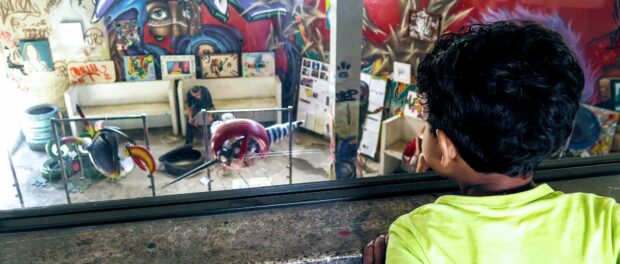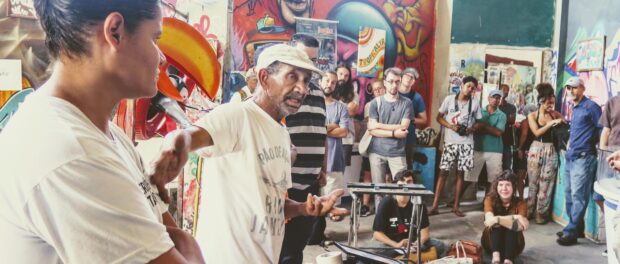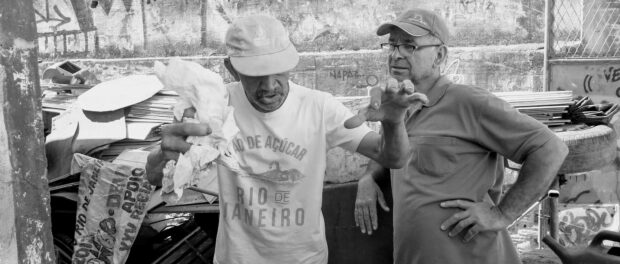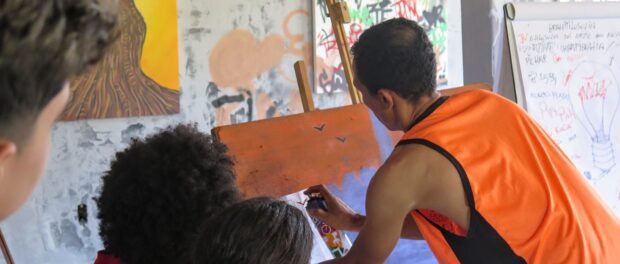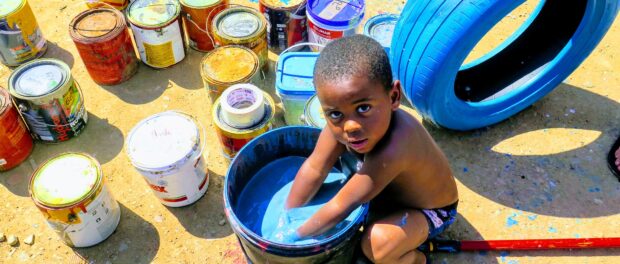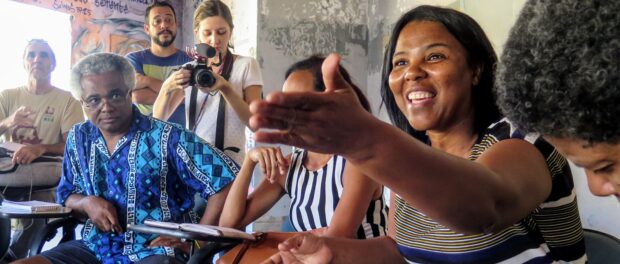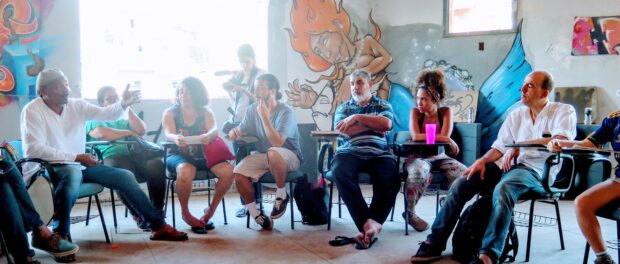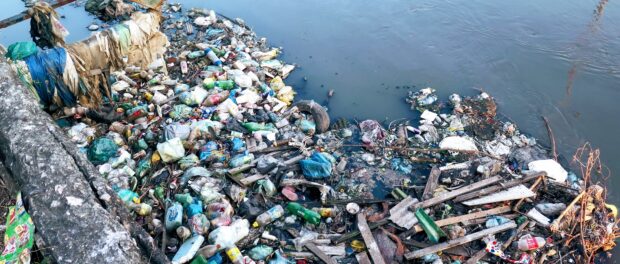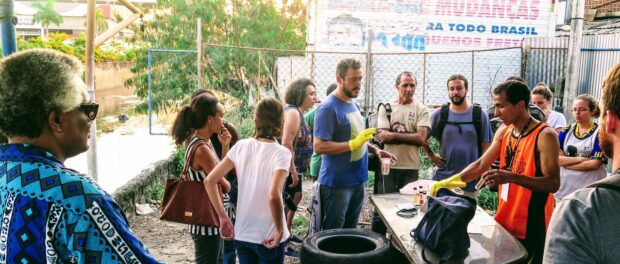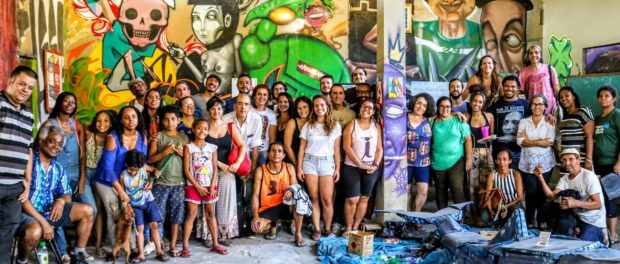
The Sustainable Favela Network (SFN) is a project of Catalytic Communities (CatComm)* designed to build and reinforce solidarity networks, bring visibility and develop joint actions to support the expansion of community-based initiatives that strengthen environmental sustainability and social resilience in favelas across the Rio de Janeiro Metropolitan Region. The project began with the 2012 film Favela as a Sustainable Model, followed in 2017 by the mapping of 111 sustainability initiatives and the publication of a final report analyzing the results.
In 2018, the project organized intimate on-site exchanges among eight of the oldest and most established organizations that were mapped in the Sustainable Favela Network, followed by a full-day exchange with the entire network that took place on November 10, 2018. Watch the video that accompanies the exchanges featured in the 2018 series by clicking here.
In 2019, the project is organizing the second round of on-site exchanges—this time open to all SFN members and the general public alike—at projects based in Babilônia, Camorim, Pavuna, Vila Kennedy and Manguinhos. This third exchange of the year had participants visit the Graffiti Museum and Verde Vale (“Green Voucher”) Project at the National Organized Graffiti Workshop Space (RONGO) in Pavuna. The exchange began with a presentation on the origins of RONGO and the community currency, followed by gardening and graffiti workshops, a capacity-building circle on community mobilization, and a visit to the Pavuna River, where participants got a glimpse of RONGO’s water quality monitoring initiative. The exchanges are supported by the Heinrich Böll Foundation Brazil.
An Emotional Welcome
On the morning of Saturday, August 27, 78 participants gathered at the headquarters of the National Organized Graffiti Workshop Space (RONGO) in Pavuna, in Rio de Janeiro’s North Zone, and were met with a warm welcome from RONGO founder and director Carlos André do Nascimento. Thus began the Sustainable Favela Network’s third exchange of 2019, with a moving speech from Nascimento, who narrated his life story from his beginnings tagging in the streets of Rio, to the founding of RONGO. Nascimento explained that his goal was to use graffiti art to record the history of his community. This, in turn, led to the birth of the Graffiti Museum, RONGO’s central attraction.
The museum, which today exhibits the work of local artists and offers art classes for youth, transports visitors to another world. The museum’s walls are covered in paintings, graffiti, biblical and historical quotations; its rooms filled with sculptures fashioned from recycled materials; and its windows wide open to the hills of Pavuna, exhibiting a panoramic display of the surrounding favelas of Pedreira and Lagartixa. The result is a fusion of sustainability and urban art.
Nascimento defines himself as an “urban environmentalist,” and this aspect led him to create the Verde Vale (Green Voucher) recycling project. The project, centered in Nascimento’s drive to “look attentively at the people and things around us,” inspired him to work with the trash and recyclable materials that accumulate in Pavuna and neighboring areas. The trash collected by volunteers is sorted at the project’s headquarters and separated to recover reusable items. Some are transformed by Verde Vale into works of arts, while others are handled by the group’s recycling cooperative, generating income for participating members.
In addition to creating a source of income and dignity for its participants, the Verde Vale system allows residents of Pavuna and surrounding communities to bring recyclables to the facility and, in return, receive a Vale Verde voucher—called a “kindness token”—that denotes the monetary value of the material. The Vale Verde voucher can then be used as payment at local restaurants, for transportation within the community, or at other local businesses that participate in the Verde Vale system. João Correa, a formerly homeless man that, thanks to Nascimento, has become a central member of the project, concluded the exchange’s opening presentation, adding that “recycling people is the most important thing that we do here.”
Colorful Workshops and a Group Lunch
Following the day’s opening presentation, participants were invited to get their hands dirty with a series of experiential workshops. Correa would lead one group through a gardening workshop, teaching the secrets of compost and domestic plants, while Nascimento gathered a second group in a collective graffiti exercise.
In the gardening workshop, Correa explained to participants the benefits of natural, homemade insecticides, telling the group “you only clean plants with clean things!” To that end, Correa taught the group to add banana peels to a jug of water and allow the mixture to settle for a period of two months. The resulting product can be used as treatment or as preventive care for keeping plants healthy. Correa recycles plants as well as waste: besides natural pesticides, Correa recommended the use of natural compost made of layers of soil, vegetable scraps, paper, and wood filings. Together, the materials allow for the growth of worms and fungus which, said Correa, become a “holy medicine for plants.”
Upstairs on the museum’s second floor, Nascimento held a graffiti workshop. He began speaking of the importance of signature tags for street artists, which function as a sort of branding. Nascimento invited each participant to sign their own unique signature on a collective work of art which would then go on display in the museum. Then, spraying with quick can strokes, Nascimento traced the image of the Serra dos Orgãos mountain range and its famous God’s Finger peak, calling participants to add their contribution to the collaborative work. After applying paint, Nascimento taught the group to use stencils, drawing birds over the image.
Following the workshops, the two groups reunited on the street corner outside the museum, on Reverend Martin Luther King Jr. Avenue, to assist with the creation of the incipient RONGO project known as Bosque Verde (Green Forest). The area, a stretch of pavement walled in by a nearby building owned by CEDAE, Rio’s public water utility, has long accumulated trash, though a few days prior to the exchange, members of RONGO cleaned the space, preparing it for the day’s intervention. The Green Forest will consist of a small park filled with old-time children’s games. Nascimento explains that these include space to play marbles and tops, as well as a reappropriated refrigerator which will serve as a free book deposit for the park’s visitors. The day’s participants met at the future park and painted tires for use as planters, part of the project’s efforts to bring green spaces to the area and other parts of the neighborhood. The group also covered the CEDAE wall in colorful paint, laying the base coat for a future graffiti project. Nascimento explained that the graffiti that will cover the wall will contain symbolic images depicting the spaces’ previous condition, such as rats, mosquitoes, and a wolf to demonstrate how dangerous the area was.
At the end of this group work, all were invited to share a low-waste lunch. The day’s participants were asked beforehand to bring their own bowls and utensils. Spreading out through the museum’s interior, the participants exchanged life stories and shared their motivations for participating in the day’s event.
Sharing Knowhow at the Community Mobilization Capacity-Building Circle
After lunch, Theresa Williamson, director of Catalytic Communities, led members of the Sustainable Favela Network in a capacity-building exchange on the topic of community mobilization, one of the key themes chosen by members at the Network’s launch in November 2018. Sharing and exchanging their diverse experiences, four members of the Network spoke of the strategies they had developed and the challenges they had faced in conducting their own community mobilization efforts.
Élida Nascimento, a resident of the nearby city of São João de Meriti and director of Projeto Inclusão (Project Inclusion), spoke of the importance of the community residents appropriating their community’s identity, explaining that São João de Meriti was seen as a sort of dormitory city (residents go elsewhere for work and leisure), and that changing that perception has been important in building a positive identity for residents. Working with children and adolescents between the ages of 5 and 17, she said that her work focuses on simplicity as a path to quality of life, and that people must feel that they are part of the process for true mobilization to take place.
Guilherme Hadasha, who directs Ateliê do Hadasha (Hadasha’s Workshop) in the favela of Manguinhos, also in Rio’s North Zone—where he works developing projects based on inclusion through music and the arts—said that he had studied classical music in college and plays various instruments, including saxophone, guitar, and drums, and that he returned to Manguinhos, where his mother has lived her whole life, to create this art with favela youth. Hadasha explained that, in planning project activities, “you can’t forget the snacks” needed to attract and involve people, and that it is necessary to involve local merchants, going door to door to gain partners within the community.
Ilaci Oliveira, director of the Cooperativa Transvida project in Vila Cruzeiro, in the North Zone favelas of Complexo do Alemão, told the group that trash in the streets of her community had become an alarming issue, and that Cooperativa Transvida had managed, little by little, to reclaim a public plaza previously covered in trash for the use of community residents. The cooperative, which aims to transform lives by resocializing people through income generation based in trash collection, also works to build socio-environmental awareness with children and youth from the community. Oliveira said that for mobilization to take place, it is important to listen to people, to map out solidarity partners in the community, and to visit people at their homes to talk in person.
Rafaela Provensano, social assistant at the Alternative Liberatory Movement for Citizenship women’s collective (M.A.L.O.C.A), located in the city of Duque de Caxias, in Greater Rio’s Baixada Fluminense, told the group that it was important to keep in mind the difficulties many participants may face in arriving at community projects, as well as their availability. Provensano also emphasized the importance of giving individual attention to each and every participant and volunteer.
At the end of the capacity-building circle, Williamson compiled a list of 10 principles for driving community organizing based on the group’s reflections.
10 Principles for Leaders in Mobilizing a Community
- Examine possible motives for non-participation. Check for potential reasons, such as: lack of understanding or insufficient information, distrust, time limitations, or different priorities.
- At first, dedicate time to actions that create trust and respect. These may include, for example: listening and offering, as possible, to help with the needs of residents, searching for ways to begin actions based on what people deem to be their priorities and learn with them.
- Begin with something small, building little by little, learning and observing continuously. Treat everything as a learning experience.
- Look to achieve agreement with key members before planning events in terms of time, duration, transportation, and other aspects that might limit their participation, thus guaranteeing their presence.
- Continuously nurture trust, the greatest asset of any project. For example: maintaining strong social and ethical principles, staying continuously available, responsive and welcoming over time.
- Act with satisfaction, from a place of abundance, showing gratitude and commemorating each small victory.
- Preserve your spirits, the second greatest asset in any project. Slow down when necessary in order to maintain balance.
- Admit vulnerabilities and ask for help. Work together and look for suggestions, including by asking non-participants what they would do differently and thus engaging them in new approaches.
- Always seek and engage new and varied allies—who will bring their experience, opinions, networks, and talents—finding a way for each to apply their talent to advance the goal, and recognizing the strength and abilities of each.
- Think creatively, outside the box, building a project in a way that recognizes: 1) the talents of allied people and institutions, 2) working towards the project’s final transformative goal, and 3) the limitations imposed by current circumstances (which, if analyzed creatively, may bring unexpected opportunities for achieving the end goal).
The Network then took its traditional group photo, and Nascimento raffled off t-shirts—from the annual Reverend Martin Luther King Run and Walk for Peace event, held annually by RONGO in homage to Brazil’s Black Awareness Day. Winners were happy to take home a piece of one of Nascimento’s may projects.
Discovering the Challenges of the Pavuna River
To close the day, a small group of motivated participants trekked across the neighborhood to visit the Pavuna River to learn more about Nascimento’s proposed initiative to create an Eco-Barrier to clean and transform the river. One group made the trip on foot while the other arrived by truck, bringing along tires and tools for water quality analysis. Together, the groups learned of the extreme pollution and the challenges it produces for residents that live on the river’s banks.
Nascimento presented the work he has undertaken in monitoring river water quality as part of the SOS Mata Atlântica Foundation’s Observing Rivers initiative, which monitors water bodies throughout Brazil. In addition to clearly demonstrating the river’s elevated pollution levels, Nascimento’s volunteer work has allowed for the creation of a registry that is used to alert public authorities. Throughout the day, participants witnessed firsthand the importance of the multiple actions undertaken by RONGO in the areas of social transformation and environmental justice. The day’s participants returned home inspired, strengthened by the support and solidarity offered by the Sustainable Favela Network.
There is still time to participate in the Sustainable Favela Network’s final exchange of 2019! The fifth and final exchange of the year will take place on September 29 in Manguinhos, hosted by Network member organizations Hadasha’s Workshop and Green Roof Favela. Contact the network by email at rede@favelasustentavel.org to find out more.
Check out our full album of the day’s events (or click here):
*RioOnWatch and the Sustainable Favela Network are projects of Catalytic Communities

